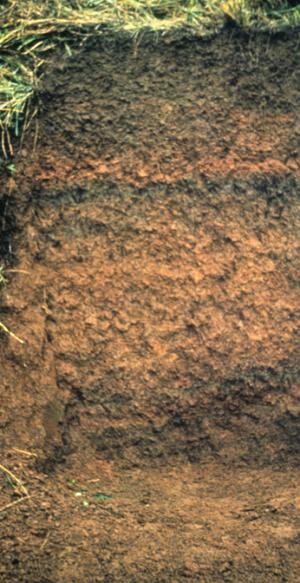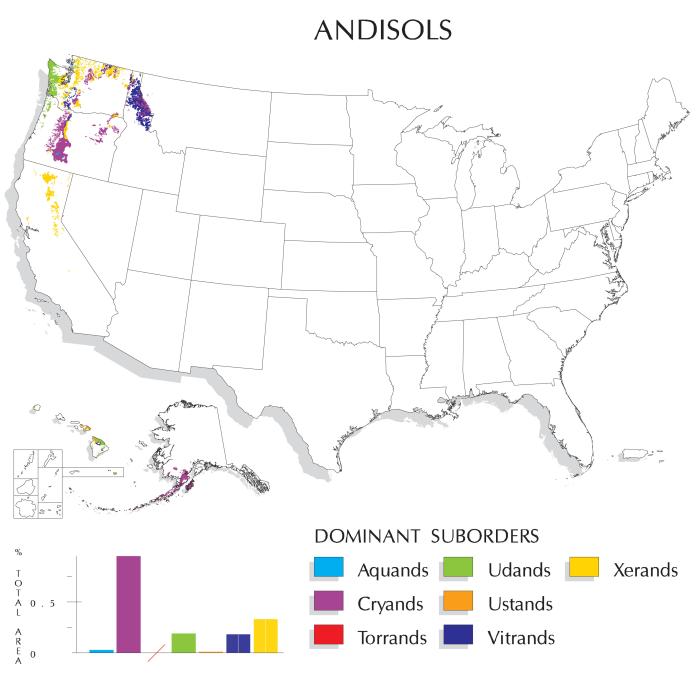Andisols
Andisols form from weathering processes that generate minerals with little orderly crystalline structure. These minerals can result in an unusually high water- and nutrient-holding capacity.

The central concept of Andisols is that of soils dominated by short-range-order minerals. They include weakly weathered soils with much volcanic glass as well as more strongly weathered soils. Hence the content of volcanic glass is one of the characteristics used in defining andic soil properties.
Materials with andic soil properties comprise 60 percent or more of the thickness between the mineral soil surface or the top of an organic layer with andic soil properties and a depth of 60 cm or a root limiting layer if shallower.
Dominant Suborders
Aquands
Aquands, which have aquic conditions,occur mostly in western Washington and Oregon, in the lower landscape positions and under forest or grass vegetation. Some of the soils have been drained and are used as cropland or pasture.
Cryands
Cryands, which have a cryic temperature regime, dominate some areas in Alaska and in the mountains of the Pacific Northwest. Most of the soils formed under coniferous forest vegetation. Most Cryands are used as forest.
Torrands
Torrands, which have an aridic (or torric) moisture regime and a temperature regime warmer than cryic, are in very few areas in western Oregon and in Hawaii. Most of the soils formed under grassy or shrub vegetation. They are used as rangeland or as irrigated cropland.
Udands
Udands, which have a udic moisture regime, a temperature regime warmer than cryic, and a relatively high content of water held too tightly for plants to use, dominate mostly in western Washington and Oregon and in Hawaii. Most of the soils formed under forest vegetation. Udands are used mostly as forest, but some have been cleared and are used as cropland or pasture.
Ustands
Ustands, which have an ustic moisture regime, a temperature regime warmer than cryic, and a relatively high content of water held too tightly for plants to use, are of very small extent in the United States. They are mostly in Hawaii. They formed mostly under forest or savanna vegetation. Ustands are used mostly as forest, cropland, or pasture or for urban development.
Vitrands
Vitrands, which are the more or less well drained, coarse textured Andisols that have a udic or ustic moisture regime, a temperature regime warmer than cryic, and a low content of water held too tightly for plants to use, occur mostly in Idaho, Oregon, and Washington. Most of the soils formed under coniferous forest vegetation. They are used mostly as forest, but some are used as rangeland and some have been cleared and are used as cropland or pasture.
Xerands
Xerands, which have a xeric moisture regime and a frigid, mesic, or thermic temperature regime, are mostly in Washington, California, Oregon, and Idaho. Most of the Xerands that have a frigid or mesic temperature regime formed under coniferous forest vegetation. Some Xerands, mostly those with a thermic temperature regime, formed under grass and shrub vegetation. They are used mostly as forest, but some have been cleared and are used as cropland or pasture.

Andisols are dominated by short-range-order minerals or Al-humus complexes. Many Andisols developed in volcanic ejecta and/or in volcaniclastic materials.


